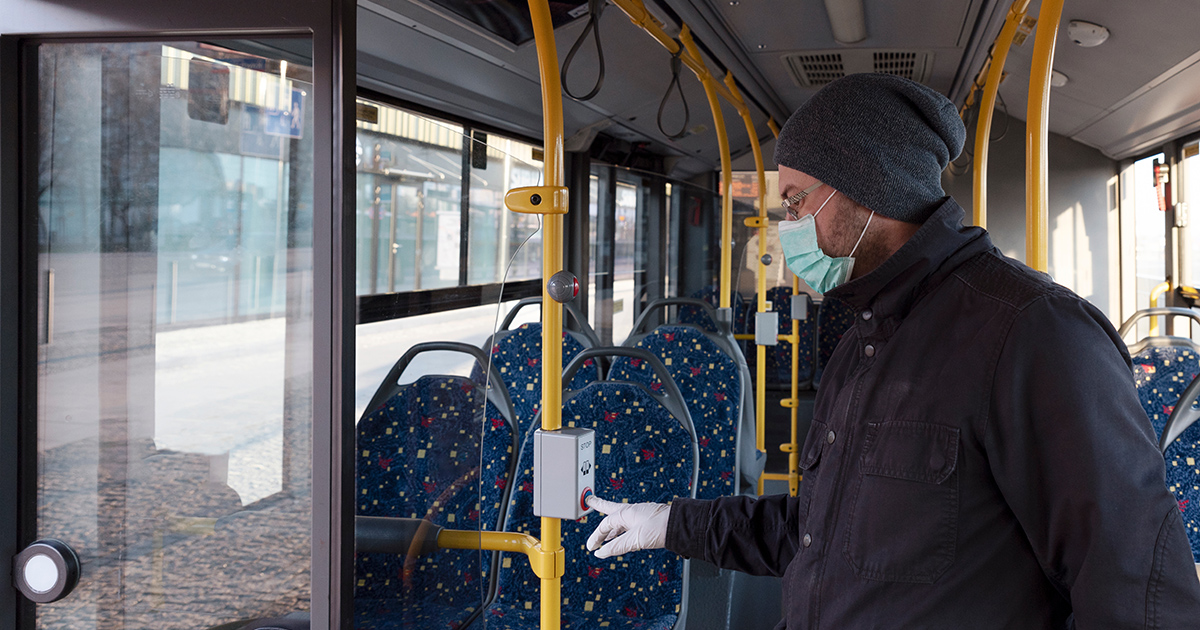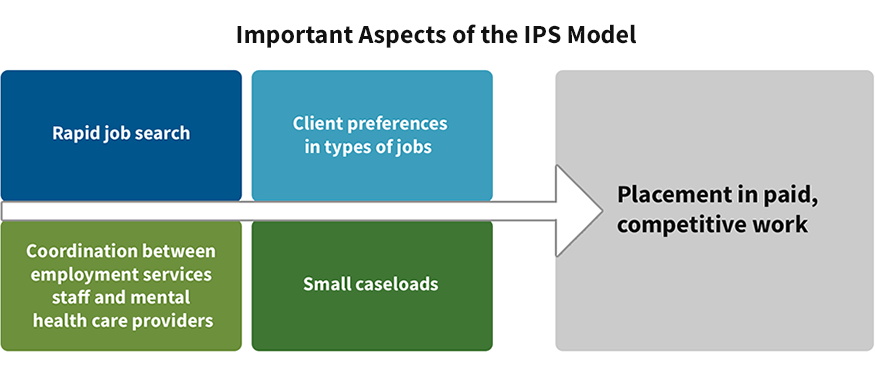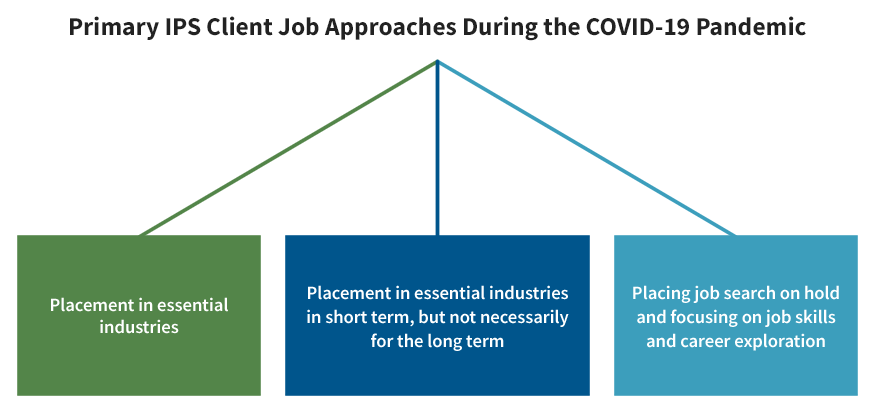Employment Help for the Most Vulnerable: Adapting the Individual Placement and Support Model in a Crisis

Employment services and work-based supports are critically important in an economic downturn, especially for the most vulnerable populations. MDRC’s recent virtual discussions with two employment providers, as part of the Building Evidence on Employment Strategies for Low-Income Families project, highlighted the creative means nonprofit employment programs have found to help people facing multiple serious barriers to finding and keeping jobs, while keeping clients and staff members safe during the COVID-19 pandemic.[1] Both providers we interviewed, the Family Service League (FSL), a grassroots social service agency in the state of New York, and Asian Human Services (AHS), a Chicago-based provider of social services, use the Individual Placement and Support (IPS) employment model, which proved flexible in the unprecedented conditions of the COVID-19 pandemic.
The IPS model, an evidence-based framework for providing employment services, originally designed for individuals with serious mental illness served by community mental health centers, is now also used to promote employment for a broader range of populations with significant barriers to employment. It focuses on several core components, some key ones of which are shown in Figure 1.[2] There is extensive evidence of IPS’s success with people with serious mental illness, with over 25 randomized controlled trials showing its effectiveness in improving employment outcomes for target populations.[3]
Figure 1

The pandemic pushed many IPS providers to innovate and adopt technology and new forms of engagement to better meet their clients where they are. Both FSL and AHS reported that many crisis-driven changes will remain regular parts of their service delivery once the pandemic is over.
Keeping in Touch in a Crisis
At the onset of the COVID-19 pandemic, employment service providers shifted rapidly to remote work and began extensive, weekly, proactive outreach with clients, checking in to make sure clients’ health and mental health needs were addressed. Both FSL and AHS put their employment services briefly on hold and initially focused on their clients’ health, safety, and well-being, reaching out to make sure they had the support they needed during the pandemic. They conducted an inventory of each person’s current employment and financial situation and helped connect them to essential benefits to help them through the crisis. They encouraged clients to stay active and engaged with their employment searches during the pandemic. Once they felt their clients' immediate health and safety needs were addressed, they resumed employment support.
FSL Director Dave Wallace said, “I was a little surprised at how well we’ve stayed connected to 100 percent of our clients who were well engaged already.” But “for those who were less engaged, it has been more difficult to stay in touch with them.”
Although outreach and engagement in employment services with new clients remains slowed down until offices are reopened, AHS staff members said the pandemic pushed the agency “to more successfully use and integrate technology to work with clients and increased the need for staff to listen to clients” with close attention to their individual circumstances, said Eric Lindstrom, AHS Program Director. Lindstrom expected to continue some of these more flexible ways of working with clients after the pandemic.
Implementing IPS in a Pandemic
Both IPS providers shared several strategies for adapting to the pandemic while best serving clients and keeping both clients and staff members safe. Even after the pandemic ends, some of these new practices may continue as part of the providers’ strategies to “meet clients where they are.”
Embracing Remote Communications and Videoconferencing
Videoconferencing and other remote communications methods quickly assumed great importance for meeting with and supporting clients. When necessary, program staff members were able to acquire phones or internet access for clients, ensuring they could continue to serve clients safely. Both AHS and FSL found that, in at least some cases, client contact became easier and more frequent as their staff more fully embraced new technologies like texting, video, and email to reach clients. Using digital and online contact also helped address barriers related to clients’ travel and allowed more flexibility on meeting times. These shifts will likely have a lasting impact at both providers, since digital and online contact allows them to serve clients conveniently and effectively.
Initial Help for the Most Vulnerable
Once they established ways to work remotely, FSL’s first task was contacting their most vulnerable clients. The agency was particularly concerned about clients with more serious mental illnesses and sought to make sure they still had access to the support, medicine, food, and care they needed to be safe. Similarly, AHS initially focused on reaching out to older clients and those with the most significant underlying health conditions, to make sure they had measures in place to support their health and safety during the pandemic. Both agencies stated that their proactive efforts to engage clients with the most serious mental illnesses was largely successful. Eric Lindstrom said staff members were directed to “be creative and maintain engagement and meet clients where they are. Make sure they’re safe. Then make sure behavioral health services, employment services are maintained as reasonable.”
Developing New Employment Plans
Both agencies revisited the employment goals of all their clients. In pandemic conditions, FSL felt the best way to move forward was to contact each client to develop a new employment plan. New plans were generally divided into three approaches, as shown in Figure 2, and these different approaches helped staff members craft individualized client services during the pandemic.
Figure 2

AHS similarly reassessed employment plans for clients. Some clients, due to concerns over health or other issues, temporarily put their job searches on hold while they continued to focus on career planning and developing job skills. For clients who sought work in essential industries, they focused on job placements, securing employment at essential businesses. For people who were not interested in working in essential industries or with more vulnerable health conditions, AHS focused on training, resume development and asking clients to take some time to reflect and actively work on their career goals in light of the pandemic.
Matching Employees and Employers During the Pandemic
Actively matching employers with employees, which is part of the IPS model, proved to be critical during the pandemic. Some essential industries expanded hiring, providing new opportunities for people who are capable and willing to work in these fields. IPS staff members can play a critical role in making connections between employers and clients.
What We Have Learned: Providers Successfully Utilized IPS During the Pandemic
Both agencies reported success placing people into jobs in grocery stores, hardware stores, delivery services, and health care settings. In the case of people who chose to suspend their job searches until the economy reopened, staff members maintain frequent contact with clients to help them stay engaged and motivated, develop resumes, conduct practice interviews, and set forth clear plans to restart job searches at an appropriate future point. Clients at IPS agencies face many challenges during the best of times, but the adaptability of these agencies shows the model’s resilience.
[1] The Office of Planning, Research, and Evaluation within the Administration for Children and Families funded the Building Evidence on Employment Strategies for Low-Income Families (BEES) project, which aims to improve understanding of which interventions are effective in supporting low-income individuals in finding jobs, advancing in the labor market, and improving their economic security.
[2] The figure emphasizes some of the broadest and most important principles at the core of the IPS model. Other key principles include systematic job development, or matching employers with employees, as well as benefits planning, time-unlimited support, a zero-exclusion policy (no disability or condition precludes a work search), and a focus on paid employment.
[3] Donald E. Frederick and Tyler J. VanderWeele. “Supported Employment: Meta-Analysis and Review of Randomized Controlled Trials of Individual Placement and Support,” PloS ONE 14, 2 (2019).






